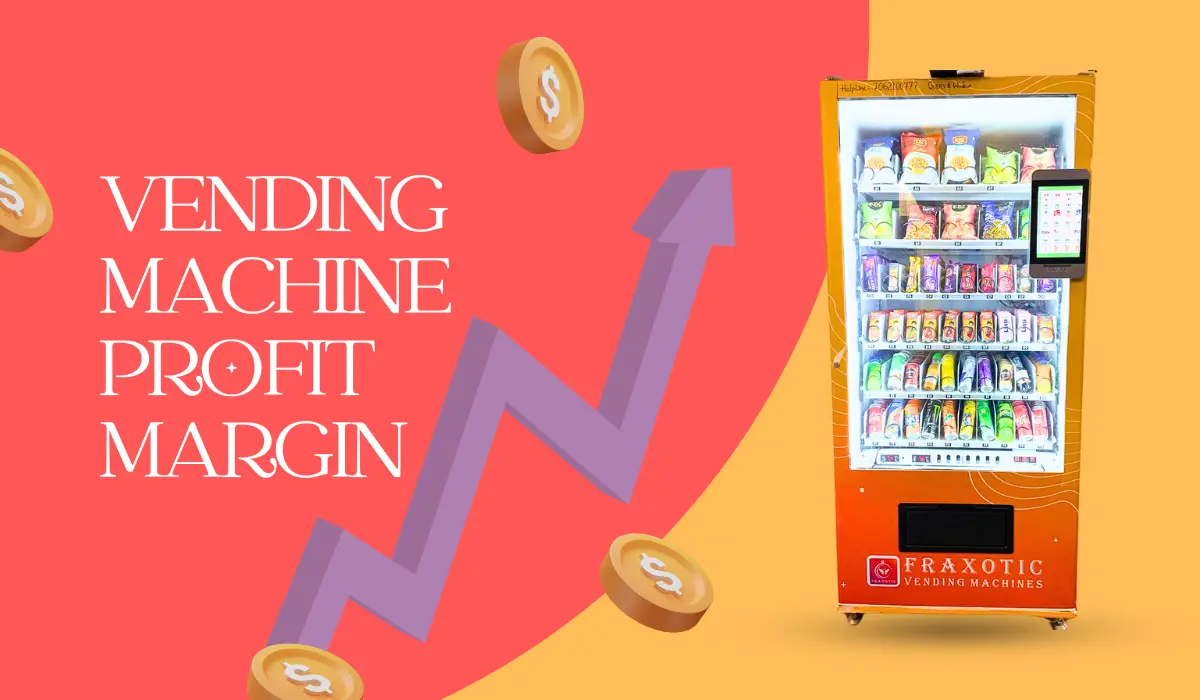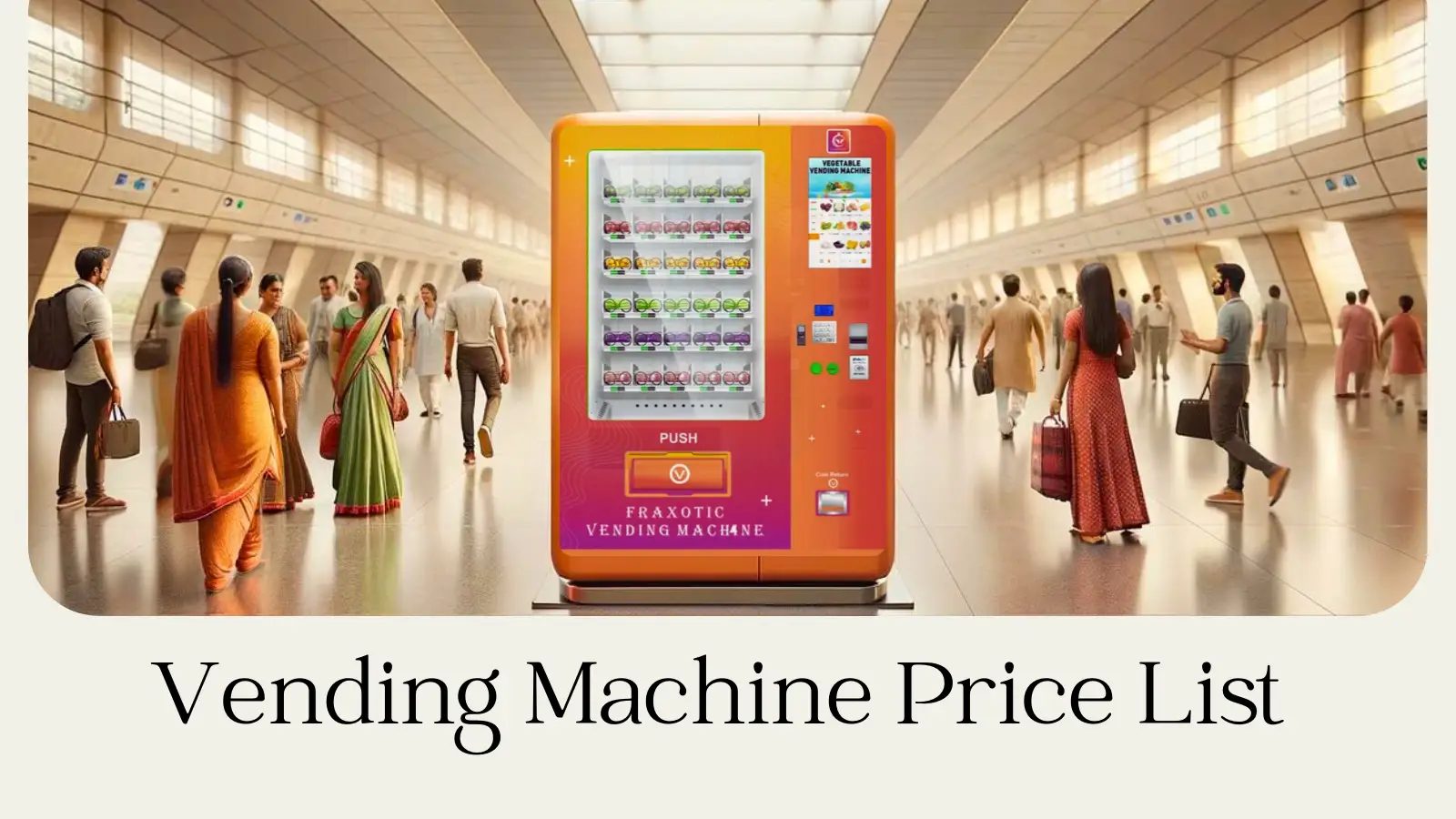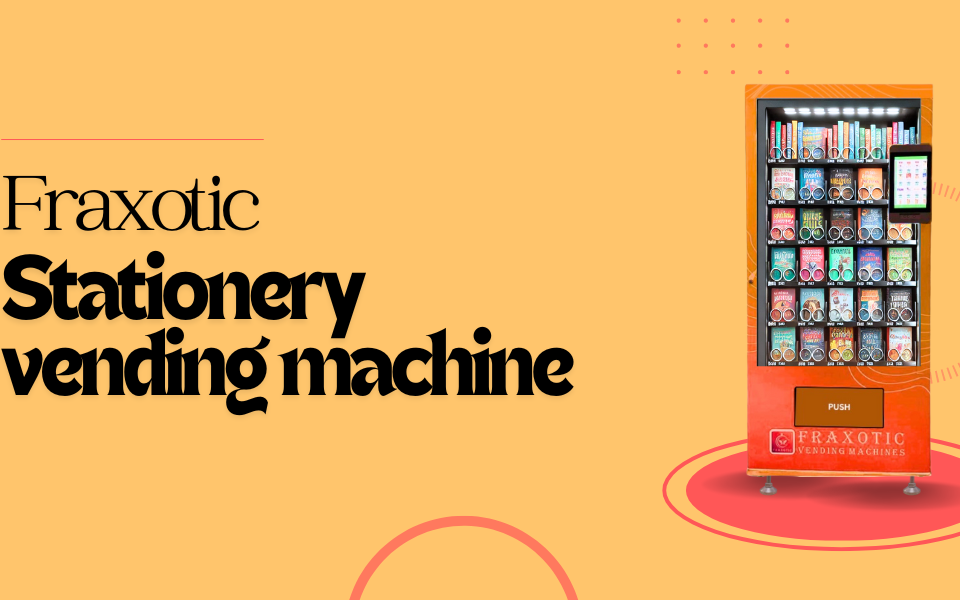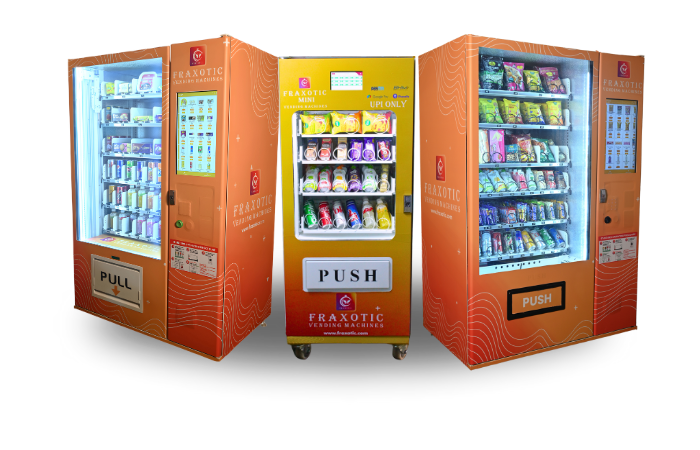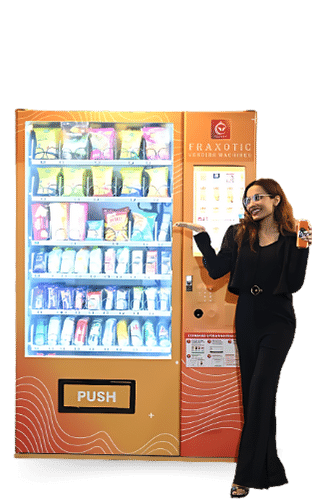
Can I Put Anything in My Vending Machine?
July 24, 2023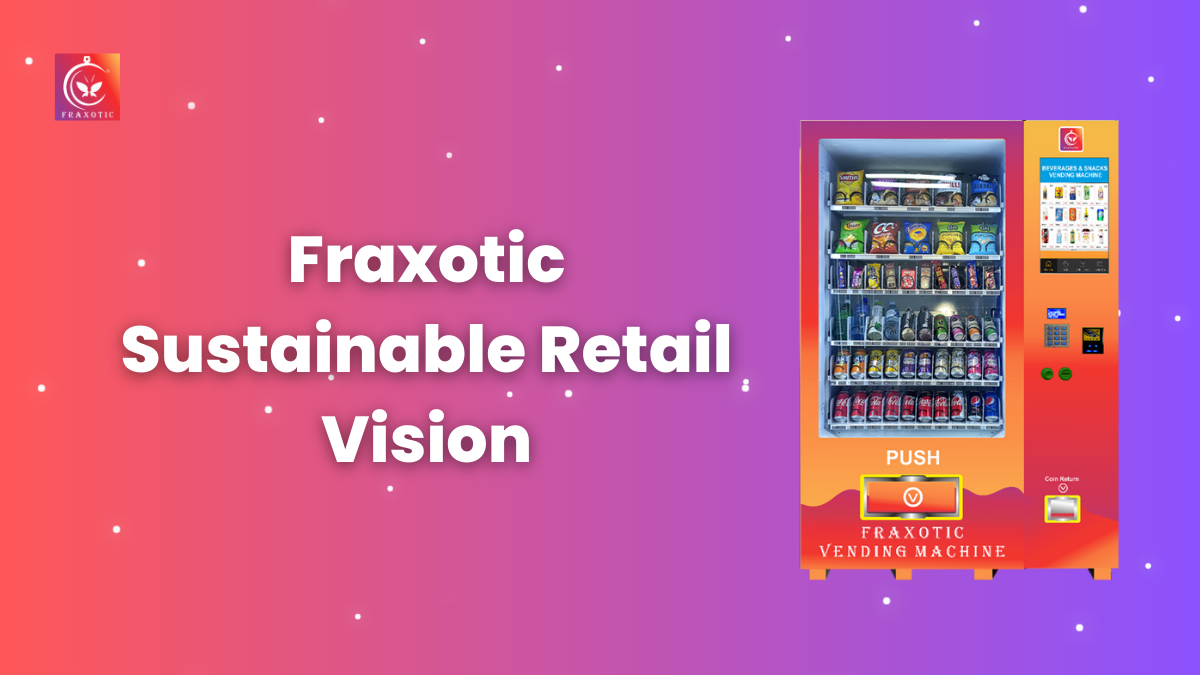
Fraxotic’s Vision: Crafting a Sustainable Future for Retail
August 18, 2023The allure of the vending machine business lies not just in its operational simplicity but also in its proven profitability. With the industry evolving rapidly, understanding the dynamics of vending machine profit margins becomes crucial for entrepreneurs looking to tap into this lucrative market.
Why is Investing in a Vending Machine Business Profitable?
Investing in a vending machine business presents a compelling opportunity for entrepreneurs seeking a venture with minimal overhead and significant flexibility. This business model stands out due to its operational autonomy, allowing machines to sell products around the clock without the need for constant human supervision. Furthermore, the initial investment required to start a vending machine business is relatively low compared to other retail or food service ventures, making it accessible to a broader range of investors. Combined with the potential for machines to be placed in high-traffic areas, these factors create a fertile ground for achieving high returns on investment, even for those new to the industry.
What are the Margins in the Vending Machine Business?
In the vending machine industry, profit margins can span a broad spectrum, heavily dependent on variables like product choice, strategic placement, and the efficiency of operations. Typically, the gross margin, which is calculated as the difference between the sales revenue and the cost of goods sold (COGS), showcases considerable variability. However, experienced operators target a gross margin that exceeds 50%. This ambitious goal necessitates a keen understanding of market demands, optimal machine locations, and meticulous cost management. Achieving such a margin is indicative of a well-optimized vending operation that maximizes profitability while meeting consumer needs effectively.
Factors Influencing Vending Machine Profitability
- Cost of Goods Sold (COGS): Efficiently managing the cost of inventory is crucial for enhancing profit margins. Lowering these costs without compromising on quality can lead to a direct improvement in profitability.
- Machine Location: The placement of vending machines in high-traffic areas such as malls, office buildings, and educational institutions usually results in a higher sales volume. Location strategy is key to capturing the maximum number of customers.
- Product Selection and Pricing: Catering to consumer demand by offering popular products at competitive prices is essential for driving sales. The right mix of products tailored to the location’s demographic can significantly boost revenue.
- Operational Efficiency: Streamlining operations to reduce waste, improve maintenance, and minimize downtime can substantially lower operating costs, thus improving profit margins.
- Technological Integration: Incorporating modern technology such as cashless payment systems, remote monitoring, and inventory tracking can enhance the customer experience, reduce labor costs, and provide valuable sales data to optimize inventory.
- Marketing and Branding: Effective marketing strategies to promote the vending machine’s location and unique product offerings can increase visibility and attract more customers. Custom wraps or branding can also enhance the machine’s appeal.
- Customer Experience: Ensuring a positive customer experience through regular maintenance, clean and well-functioning machines, and responsive customer service can build loyalty and repeat business, which is crucial for sustained profitability.
Average Profit Margins in the Vending Machine Industry
Profit margins can differ based on the type of vending machine. Traditional snack and soda machines often see a gross margin of around 40-50%, whereas specialized machines, such as those selling gourmet coffee or healthy snacks, can command higher margins due to the premium nature of their offerings.
Strategies to Improve Your Vending Machine Profit Margins
- Regular Market Research: Stay informed about the latest consumer trends and preferences to keep your product offerings relevant and appealing. This can involve introducing seasonal items or capitalizing on trending products to attract more customers.
- Dynamic Pricing Strategies: Implement pricing strategies that reflect the value of the convenience offered, taking into account the location and unique demands of your customer base. Special promotions or discounts for less popular products can also help clear inventory efficiently.
- Energy Efficiency: Invest in energy-efficient machines to lower electricity costs. Modern vending machines with eco-friendly features not only reduce operational expenses but also appeal to environmentally conscious consumers.
- Customer Engagement: Use social media or loyalty programs to build a community around your vending machines. Engaging with customers through feedback and rewards can increase repeat business and attract new customers through word-of-mouth.
- Vendor Negotiations: Regularly negotiate with product suppliers to get better deals on your inventory. Buying in bulk or establishing long-term relationships with suppliers can lead to discounts, thereby reducing the cost of goods sold.
- Maintenance and Cleanliness: Ensure that your vending machines are regularly serviced and kept clean. A well-maintained machine is more reliable, reducing downtime and potential lost sales, and presents a better image to the customer.
The Future of Vending Machine Profit Margins
The future of vending machine profit margins looks promising, driven by rapid technological advancements and changing consumer behaviors. The integration of Artificial Intelligence (AI) and the Internet of Things (IoT) into smart vending machines is transforming the vending industry, paving the way for enhanced personalization, improved operational efficiency, and innovative customer engagement strategies. These smart machines can adapt to consumer preferences, manage inventory in real-time, and offer targeted marketing, significantly boosting sales potential. Coupled with an increasing consumer demand for instant, on-the-go solutions, these technological innovations herald a new era of increased profitability and growth opportunities for vending machine operators.
So, are you ready to take the plunge and become a part of India’s vending machine success story? With Fraxotic by your side, the path to becoming a successful entrepreneur is just a machine away!
Conclusion
The vending machine business remains a compelling proposition for entrepreneurs, characterized by its potential for healthy profit margins and operational simplicity. By focusing on strategic product selection, optimizing placement, and embracing technological advancements, vending machine operators can position themselves for success in this evolving industry.
The key to maximizing your vending machine profit margins lies in understanding the factors that influence profitability and implementing strategies to leverage these for business growth. As the industry continues to advance, staying informed and adaptable will be crucial for maintaining and enhancing profitability.

